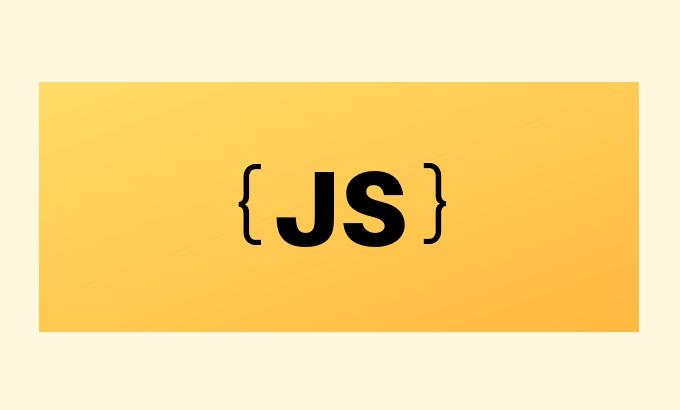Use async/await to make asynchronous code easier to read and maintain. 1. You must use await in the async function, otherwise an error will be reported unless the environment supports top-level await; 2. Use try/catch to handle errors to avoid uncaught Promise rejections; 3. Try to perform independent asynchronous operations in parallel to avoid unnecessary serial waiting, and use Promise.all to improve performance. When using async/await correctly, you need to pay attention to always handling Promise results, reasonably managing errors, and optimizing execution order, so that you can write asynchronous code efficiently.

You work with async/await in JavaScript by writing asynchronous code that looks and behaves more like synchronous code, making it easier to read and maintain. Here's how it works and how to use it effectively.

What is async/await ?
async/await is built on top of Promises and provides a cleaner syntax for handling asynchronous operations. An async function always returns a Promise, and await can only be used inside an async function to pause execution until the Promise settlements.
async function fetchData() {
const response = await fetch('https://api.example.com/data');
const data = await response.json();
return data;
} This is much cleaner than chaining .then() calls.

How to Use async/await Properly
1. Always use await inside async functions
You can't use await at the top level of your script unless you're in a module with top-level await (available in modern environments).
// ? Works
async function getUser() {
const res = await fetch('/user');
return await res.json();
}
// ? Throws error (unless in module with top-level await)
// const data = await fetch('/user').then(r => r.json()); If you're not in an async function, you'll need to fall back to .then() or wrap the code in an async IIFE:

(async () => {
const data = await fetchData();
console.log(data);
})(); 2. Handle errors with try/catch
Since await can cause the code to throw if the Promise is rejected, wrap it in a try/catch block.
async function safeFetch() {
try {
const response = await fetch('https://api.example.com/data');
if (!response.ok) throw new Error('Network error');
const data = await response.json();
console.log(data);
} catch (error) {
console.error('Fetch failed:', error.message);
}
} This is cleaner than using .catch() on Promises.
3. Run async operations in parallel when possible
Using await one after another blocks execution. If you need multiple independent async operations, start them all first, then await their results.
async function fetchMultiple() {
// ? Slower: one after another
// const a = await fetch('/a');
// const b = await fetch('/b');
// ? Faster: run in parallel
const promiseA = fetch('/a');
const promiseB = fetch('/b');
const resA = await promiseA;
const resB = await promiseB;
return [await resA.json(), await resB.json()];
} Or use Promise.all() for even cleaner syntax:
const [dataA, dataB] = await Promise.all([ fetch('/a').then(res => res.json()), fetch('/b').then(res => res.json()) ]);
Common Pitfalls to Avoid
- Forgetting
await: If you forgetawait, you get a Promise instead of the resolved value. - Top-level
awaitsupport : Not available in all environments (eg, older Node.js or non-module scripts). - Overusing
awaitserially : Can slow down your app unnecessarily. - Not handling errors : Uncaught rejections can crash your app.
Basically, async/await makes async code easier to write and debug — just remember it's just syntactic sugar over Promises. Use try/catch , avoid unnecessary blocking, and handle edge cases. That's how you work with it well.
The above is the detailed content of How do you work with async/await in JavaScript?. For more information, please follow other related articles on the PHP Chinese website!

Hot AI Tools

Undress AI Tool
Undress images for free

Undresser.AI Undress
AI-powered app for creating realistic nude photos

AI Clothes Remover
Online AI tool for removing clothes from photos.

Clothoff.io
AI clothes remover

Video Face Swap
Swap faces in any video effortlessly with our completely free AI face swap tool!

Hot Article

Hot Tools

Notepad++7.3.1
Easy-to-use and free code editor

SublimeText3 Chinese version
Chinese version, very easy to use

Zend Studio 13.0.1
Powerful PHP integrated development environment

Dreamweaver CS6
Visual web development tools

SublimeText3 Mac version
God-level code editing software (SublimeText3)
 How to make an HTTP request in Node.js?
Jul 13, 2025 am 02:18 AM
How to make an HTTP request in Node.js?
Jul 13, 2025 am 02:18 AM
There are three common ways to initiate HTTP requests in Node.js: use built-in modules, axios, and node-fetch. 1. Use the built-in http/https module without dependencies, which is suitable for basic scenarios, but requires manual processing of data stitching and error monitoring, such as using https.get() to obtain data or send POST requests through .write(); 2.axios is a third-party library based on Promise. It has concise syntax and powerful functions, supports async/await, automatic JSON conversion, interceptor, etc. It is recommended to simplify asynchronous request operations; 3.node-fetch provides a style similar to browser fetch, based on Promise and simple syntax
 JavaScript Data Types: Primitive vs Reference
Jul 13, 2025 am 02:43 AM
JavaScript Data Types: Primitive vs Reference
Jul 13, 2025 am 02:43 AM
JavaScript data types are divided into primitive types and reference types. Primitive types include string, number, boolean, null, undefined, and symbol. The values are immutable and copies are copied when assigning values, so they do not affect each other; reference types such as objects, arrays and functions store memory addresses, and variables pointing to the same object will affect each other. Typeof and instanceof can be used to determine types, but pay attention to the historical issues of typeofnull. Understanding these two types of differences can help write more stable and reliable code.
 React vs Angular vs Vue: which js framework is best?
Jul 05, 2025 am 02:24 AM
React vs Angular vs Vue: which js framework is best?
Jul 05, 2025 am 02:24 AM
Which JavaScript framework is the best choice? The answer is to choose the most suitable one according to your needs. 1.React is flexible and free, suitable for medium and large projects that require high customization and team architecture capabilities; 2. Angular provides complete solutions, suitable for enterprise-level applications and long-term maintenance; 3. Vue is easy to use, suitable for small and medium-sized projects or rapid development. In addition, whether there is an existing technology stack, team size, project life cycle and whether SSR is needed are also important factors in choosing a framework. In short, there is no absolutely the best framework, the best choice is the one that suits your needs.
 JavaScript time object, someone builds an eactexe, faster website on Google Chrome, etc.
Jul 08, 2025 pm 02:27 PM
JavaScript time object, someone builds an eactexe, faster website on Google Chrome, etc.
Jul 08, 2025 pm 02:27 PM
Hello, JavaScript developers! Welcome to this week's JavaScript news! This week we will focus on: Oracle's trademark dispute with Deno, new JavaScript time objects are supported by browsers, Google Chrome updates, and some powerful developer tools. Let's get started! Oracle's trademark dispute with Deno Oracle's attempt to register a "JavaScript" trademark has caused controversy. Ryan Dahl, the creator of Node.js and Deno, has filed a petition to cancel the trademark, and he believes that JavaScript is an open standard and should not be used by Oracle
 What is the cache API and how is it used with Service Workers?
Jul 08, 2025 am 02:43 AM
What is the cache API and how is it used with Service Workers?
Jul 08, 2025 am 02:43 AM
CacheAPI is a tool provided by the browser to cache network requests, which is often used in conjunction with ServiceWorker to improve website performance and offline experience. 1. It allows developers to manually store resources such as scripts, style sheets, pictures, etc.; 2. It can match cache responses according to requests; 3. It supports deleting specific caches or clearing the entire cache; 4. It can implement cache priority or network priority strategies through ServiceWorker listening to fetch events; 5. It is often used for offline support, speed up repeated access speed, preloading key resources and background update content; 6. When using it, you need to pay attention to cache version control, storage restrictions and the difference from HTTP caching mechanism.
 Handling Promises: Chaining, Error Handling, and Promise Combinators in JavaScript
Jul 08, 2025 am 02:40 AM
Handling Promises: Chaining, Error Handling, and Promise Combinators in JavaScript
Jul 08, 2025 am 02:40 AM
Promise is the core mechanism for handling asynchronous operations in JavaScript. Understanding chain calls, error handling and combiners is the key to mastering their applications. 1. The chain call returns a new Promise through .then() to realize asynchronous process concatenation. Each .then() receives the previous result and can return a value or a Promise; 2. Error handling should use .catch() to catch exceptions to avoid silent failures, and can return the default value in catch to continue the process; 3. Combinators such as Promise.all() (successfully successful only after all success), Promise.race() (the first completion is returned) and Promise.allSettled() (waiting for all completions)
 Leveraging Array.prototype Methods for Data Manipulation in JavaScript
Jul 06, 2025 am 02:36 AM
Leveraging Array.prototype Methods for Data Manipulation in JavaScript
Jul 06, 2025 am 02:36 AM
JavaScript array built-in methods such as .map(), .filter() and .reduce() can simplify data processing; 1) .map() is used to convert elements one to one to generate new arrays; 2) .filter() is used to filter elements by condition; 3) .reduce() is used to aggregate data as a single value; misuse should be avoided when used, resulting in side effects or performance problems.
 JS roundup: a deep dive into the JavaScript event loop
Jul 08, 2025 am 02:24 AM
JS roundup: a deep dive into the JavaScript event loop
Jul 08, 2025 am 02:24 AM
JavaScript's event loop manages asynchronous operations by coordinating call stacks, WebAPIs, and task queues. 1. The call stack executes synchronous code, and when encountering asynchronous tasks, it is handed over to WebAPI for processing; 2. After the WebAPI completes the task in the background, it puts the callback into the corresponding queue (macro task or micro task); 3. The event loop checks whether the call stack is empty. If it is empty, the callback is taken out from the queue and pushed into the call stack for execution; 4. Micro tasks (such as Promise.then) take precedence over macro tasks (such as setTimeout); 5. Understanding the event loop helps to avoid blocking the main thread and optimize the code execution order.






